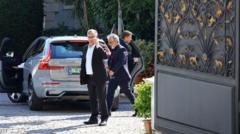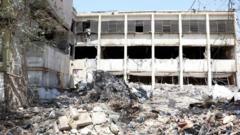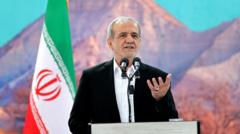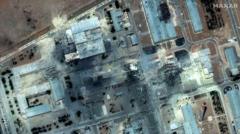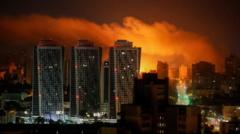Significant works by iconic artists like Picasso, Warhol, and Pollock remain largely hidden, but recent exhibitions have rekindled interest in this remarkable collection.
Tehran's Hidden Art Trove: A Collection of Global Masterpieces
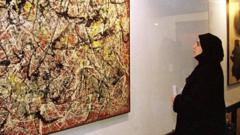
Tehran's Hidden Art Trove: A Collection of Global Masterpieces
Art enthusiasts around the globe are beginning to uncover a secret treasure trove of world-renowned masterpieces in Tehran, Iran.
In a remarkable revelation, the Tehran Museum of Contemporary Art is at the center of a long-hidden collection of masterpieces, featuring luminaries such as Jackson Pollock, Pablo Picasso, and Vincent Van Gogh. This collection, valued at an astounding $3 billion as of 2018, has largely been kept under wraps since the Islamic Revolution of 1979, when many artworks were deemed inappropriate for public viewing due to their nudity or political implications.
Recently, the museum has gained renewed attention with the success of the Eye to Eye exhibition, which opened in October 2024 and has since been extended twice due to overwhelming public demand. This exhibition represents a significant milestone in the museum's history, offering an unprecedented look at over 15 works, including a sculpture by Jean Dubuffet, all showcased for the first time.
One standout in this treasure trove is Warhol's striking portrait of Farah Pahlavi, Iran's last queen, which seamlessly blends pop art with Iranian cultural history. The collection also features remarkable pieces like Francis Bacon's provocative Two Figures Lying on a Bed with Attendants, and contrasting its controversial imagery, a portrait of Ayatollah Khomeini is displayed nearby.
Established in 1977 under the patronage of Pahlavi, the exiled widow of the last Shah, the museum aimed to connect Iran with modern art. However, after the revolution, many artworks were hidden from the public eye, falling into obscurity until the late 1990s when reformist politicians reopened a dialogue around cultural expression.
In recent years, art lovers have had the privilege of glimpsing the likes of Van Gogh, Dali, and Monet. Despite the UK's Foreign Office advising against travel to Iran due to concerns over the treatment of British nationals, the Tehran Museum of Contemporary Art remains an incredible repository of modern art, nestled in the heart of a politically complex environment.
Challenges persist, as the museum operates under budget constraints and shifting political landscapes, but it continues to be an essential cultural hub and guardian of these masterpieces.
Recently, the museum has gained renewed attention with the success of the Eye to Eye exhibition, which opened in October 2024 and has since been extended twice due to overwhelming public demand. This exhibition represents a significant milestone in the museum's history, offering an unprecedented look at over 15 works, including a sculpture by Jean Dubuffet, all showcased for the first time.
One standout in this treasure trove is Warhol's striking portrait of Farah Pahlavi, Iran's last queen, which seamlessly blends pop art with Iranian cultural history. The collection also features remarkable pieces like Francis Bacon's provocative Two Figures Lying on a Bed with Attendants, and contrasting its controversial imagery, a portrait of Ayatollah Khomeini is displayed nearby.
Established in 1977 under the patronage of Pahlavi, the exiled widow of the last Shah, the museum aimed to connect Iran with modern art. However, after the revolution, many artworks were hidden from the public eye, falling into obscurity until the late 1990s when reformist politicians reopened a dialogue around cultural expression.
In recent years, art lovers have had the privilege of glimpsing the likes of Van Gogh, Dali, and Monet. Despite the UK's Foreign Office advising against travel to Iran due to concerns over the treatment of British nationals, the Tehran Museum of Contemporary Art remains an incredible repository of modern art, nestled in the heart of a politically complex environment.
Challenges persist, as the museum operates under budget constraints and shifting political landscapes, but it continues to be an essential cultural hub and guardian of these masterpieces.

